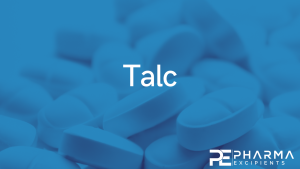Fused Deposition Modeling (FDM), the new asset for the production of tailored medicines

Over the last few years, conventional medicine has been increasingly moving towards precision medicine. Today, the production of oral pharmaceutical forms tailored to patients is not achievable by traditional industrial means. A promising solution to customize oral drug delivery has been found in the utilization of 3D Printing and in particular Fused Deposition Modeling (FDM). Thus, the aim of this systematic literature review is to provide a synthesis on the production of pharmaceutical solid oral forms using FDM technology. In total, 72 relevant articles have been identified via two well-known scientific databases (PubMed and ScienceDirect). Overall, three different FDM methods have been reported: “Impregnation-FDM”, “Hot Melt Extrusion coupled with FDM” and “Print-fill”, which yielded to the formulation of thermoplastic polymers used as main component, five families of other excipients playing different functional roles and 47 active ingredients.
Solutions are underway to overcome the high printing temperatures, which was the initial brake on to use thermosensitive ingredients with this technology. Also, the moisture sensitivity shown by a large number of prints in preliminary storage studies is highlighted. FDM seems to be especially fitted for the treatment of rare diseases, and particular populations requiring tailored doses or release kinetics. For future use of FDM in clinical trials, an implication of health regulatory agencies would be necessary. Hence, further efforts would likely be oriented to the use of a quality approach such as “Quality by Design” which could facilitate its approval by the authorities, and also be an aid to the development of this technology for manufacturers.
Continue on Fused Deposition Modeling
The article covers also the excipients used in FDM:
Polymers can be classified according to their rate of release into water:
- Immediate release: Eudragit® EPO, Kollicoat® IR, PEO, Kollidon® VA64, PVP and PEG.
- Sustained release: PVA, Eudragit® RL, PCL, PLA, HPMC, HPC, TPU, Soluplus®.
- Delayed release: HPMCAS, Eudragit® L and Eudragit®
Besides thermoplastic polymers, other excipients have been used within filament formulations. Five major families of excipients have been identified, whose roles stand out as follows:
– Plasticizers, aiming to reduce the melting point of the filaments and to allow printing at a lower temperature. For example, tween 80, sorbitol, PEO, stearic acid or PEG (polyethylene glycol)
– Fillers, materials used to densify filaments which possess too flexible mechanical properties. For instance, talc, tri calcium phosphate, tribasic phosphate sodium.
– Lubricants, allowing a better rheology and facilitating the passage in the nozzle of the printer: magnesium stearate, calcium stearate, anhydrous colloidal silica or PEG.
– Release modifiers: sodium alginate, xanthan gum, microcrystalline cellulose, mannitol, sodium lauryl sulfate. And disintegrants or super-disintegrants such as croscarmellose sodium, sodium starch glycolate or crosslinked PVP.
– Others: magnesium carbonate used as a stabilizer protecting the active ingredient from oxidation and hydrolysis.
Read more on Talc as a pharmaceutical excipient here:


